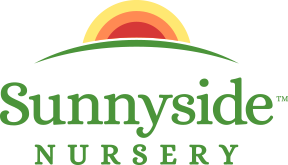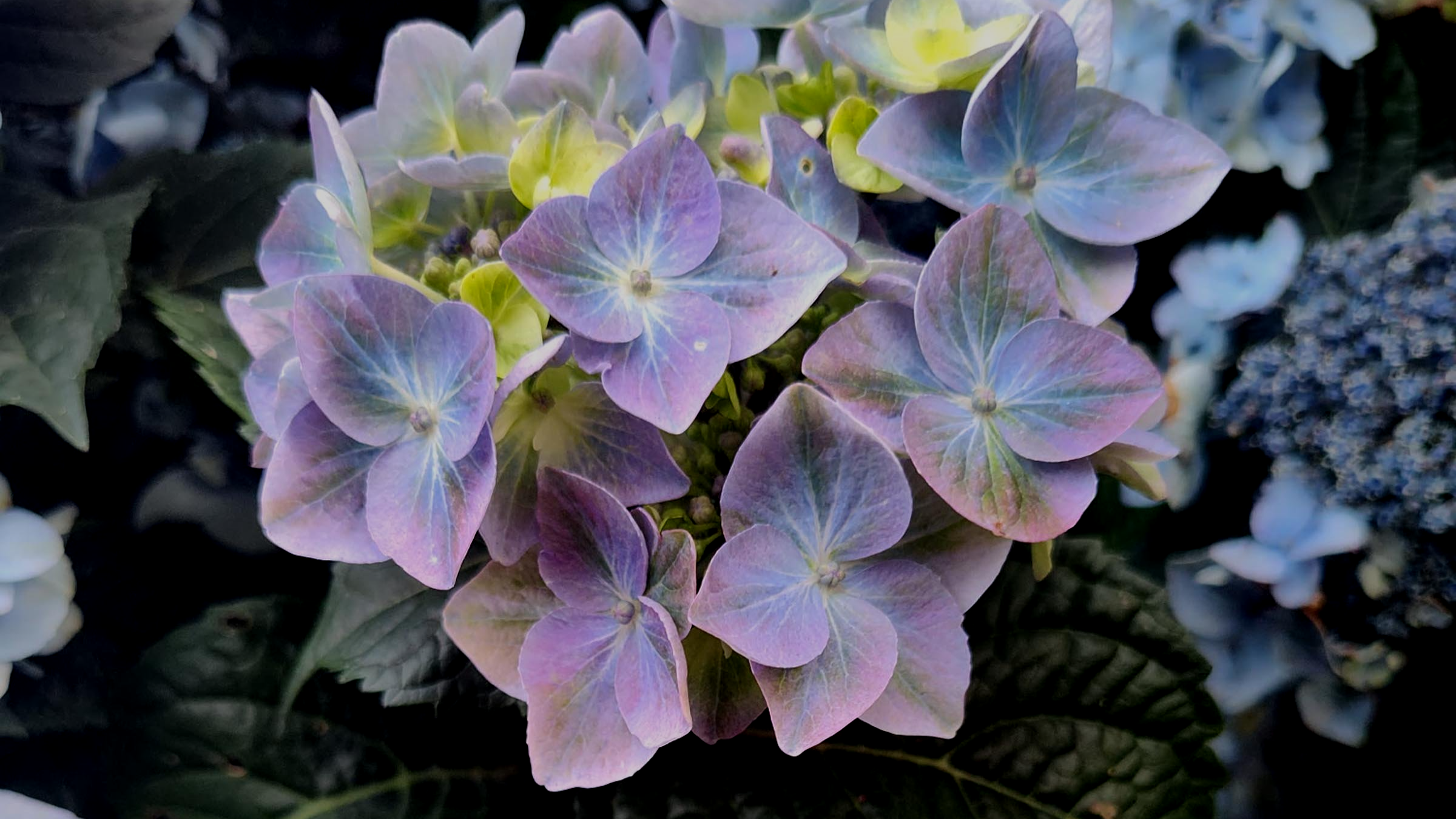I think all gardeners crave color and flower power that brings smiles to faces throughout their landscape. When we talk about options for summer-blooming shrubs, Roses and Hydrangeas stand above all others for both choice and longevity. Roses are for full sun, while depending on the variety, Hydrangeas can be for sun, partial sun or shade. I seem to write about Hydrangeas each summer, partially because they are some of my favorite shrubs, but also because they truly deserve a prominent place in your garden, just as they do in mine. Last weekend I taught a class on them at the nursery, hopefully inspiring a few people to add some new ones into their garden and feel confident in being able to care for them properly. I would invite you to watch the class recording on our YouTube channel and download the handout off of our website for reference. Learning some basics will really help you make varietal decisions and ensure that you help them thrive in your own garden oasis.
The plethora of Hydrangea options overwhelms me these days, and I have a feeling that if you travel down this rabbit hole it may make you dizzy as well. Every year more good ones are introduced, offering various improvements over past flavors. Some are vastly different, but the mission of the breeder is to always look for that next great introduction. There is nothing wrong with classic old-school cultivars, but the vast majority of newer ones offer one major benefit… new wood bloom; meaning that they are essentially “ever-blooming” and will bud/bloom on both old and new wood. This opens up pruning options since you can prune them down hard each March to keep the plants smaller and they will still flower that summer. You can also let them get taller by not pruning as much, it is totally up to you and how much room you have in that garden location. I tell gardeners that if you have room (like a 6-foot by 6-foot spot), go old school and grow yourself a nice large specimen. If you are doing these in containers or in a smaller garden locale, utilize newer flavors that you can prune and keep more like 3 to 4-feet tall and wide (and some even smaller) without sacrificing flowers.
Our focus this week is on one common type of Hydrangeas that we see all over, Hydrangea macrophylla, or what is commonly called “Big Leaf" Hydrangeas. These come in mophead (round) or lacecap (flat) flower forms in a myriad of named varieties. These prefer partial shade in order to grow their best and are typically blue or purple in color in our area due to our acidic soil conditions. Any gardener can play mad scientist and adjust the pH level in their garden, thus changing the color of their flowers to pink or red. Many plants now add foliage color, like a touch of burgundy or purple to new foliage, especially in some sun. There are some outstanding varieties of these now available at local garden centers and entire collections of worthy specimens to contemplate. Here are a few to consider…
‘Eclipse’: This was the plant of the year last year, and it continues to stun gardeners in 2025. Dark black-purple foliage (more sun equals more color) and bright red flowers with white centers that are show stoppers. I cannot say enough good things about this unbelievable variety from the First Editions program at Bailey Nursery. As Bailey might say, this is an Eclipse worth staring at!
‘Seaside Serenade Collection’: Every member of this series, available through Monrovia Nursery, is worthy but a few that are particularly unique… ‘Glacier Bay’ is a lovely, pure white lacecap variety with dark black stems perfect in partial shade – a very cool combination in the shady garden. ‘Fire Island’ is one that has a touch of purplish foliage in the sun and a fiery red/white flower that is quite stunning. ‘Newport’ may be the tidiest Hydrangea ever; a super compact and heavy blooming mophead for partial shade that has a lovely blue to purple color in our soils. This series is “ever-blooming” and perfect examples of modern breeding for superior flower power.
‘Endless Summer Collection’: Like the series above, all of the members of this collection are new school and easy to prune and grow. I think the best ones include ‘Pop Star’, a super easy dwarf lacecap variety that glows blue for us in the PNW and grows nicely in pots as well. ‘Summer Crush’ is another one that I enjoy, sporting mophead flowers that go from raspberry-red to purple tones, depending on your soil pH. ‘Twist and Shout’ is another show-stopper, a larger lacecap variety sporting loads of summer color and a little more size than ‘Pop Star’.
‘Turtle Toes’: Those who like some serious green will be captivated by this new one. Lime-green mophead flowers with white eyes are born above deep green foliage – an interesting combination for sure. These are new wood boomers, tidy, and prefer partial shade – a morning sun only location would be ideal.
‘Akadama’: This lovely introduction from Star Roses and Plants has some big ol’ flowers. The foliage is burgundy colored in cooler spring and fall temperatures and deep green in the summer heat. In alkaline soil it will be a rich red/deep pink color, in our acidic soils it will be more cobalt blue to purple. It has nice thick stems and a compact habit, maturing to about 4 to 5-feet tall and wide with time.
‘Kimono’: This fabulous plant from Plants Nouveau (the Bloomin’ Easy brand) offers gardeners simply everything. These boast a compact habit, maroon foliage highlights, and huge red/white bicolor flowers all summer through fall. One of the best for growing in pots and super tidy to only 2 to 3-feet tall and wide.
‘The “Hi” Series’: Two new ones from the HiBreeding program that really caught my eye in 2025 were from this series. ‘Hi Crimson’ is a simply stunning mophead for partial shade with vivid crimson-red blooms in alkaline soil and a deep violet-purple in our acidic soils. ‘Hi Sun’ brings back classic white, sporting huge white mophead flowers for more shady spots. Both repeat flower and stay tidy in the 3 to 4-feet tall and wide neighborhood.
These represent a few of the new generation Hydrangeas out on the market these days, but there are plenty of other useful flavors as well. Do not for a minute think that I am neglecting old school varieties; as I mentioned above, if you have the room, larger old wood bloomers like ‘Nikko Blue’, ‘Glowing Embers’, ‘Ayesha’, ‘Blue Bird’, or countless others can work nicely. To me, adding some summer bloom into the landscape via the world of shrubs is the whole point… plant Hydrangeas! Summer is the perfect time to stop into your local garden center to gaze upon the many available options. Speak with a Certified Professional Horticulturist about your specific needs and allow them to show you some useful Hydrangeas for your specific location. Whether you choose a lovely mophead or lacecap type for partial shade to sun, either will please you with a long season of bloom. Learn how to care for your new treasure, and most importantly remember to keep it well watered in our dry summer weather. There is surely a flavor to catch any gardener’s fancy, so go explore the world of Big Leaved Hydrangeas and add a few newbies to your landscape.
Stay tuned next week as we will dive into Hydrangea paniculata (PG or panicle Hydrangeas) and other similar ones suitable for growing in full sun.
Remember, leaves up, roots down…



